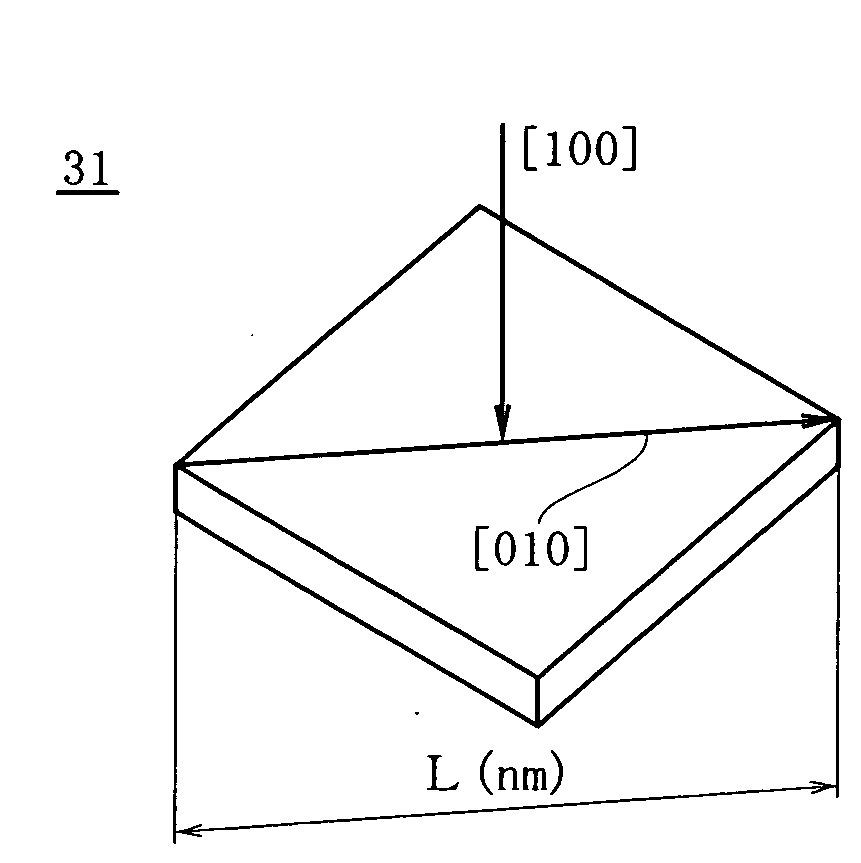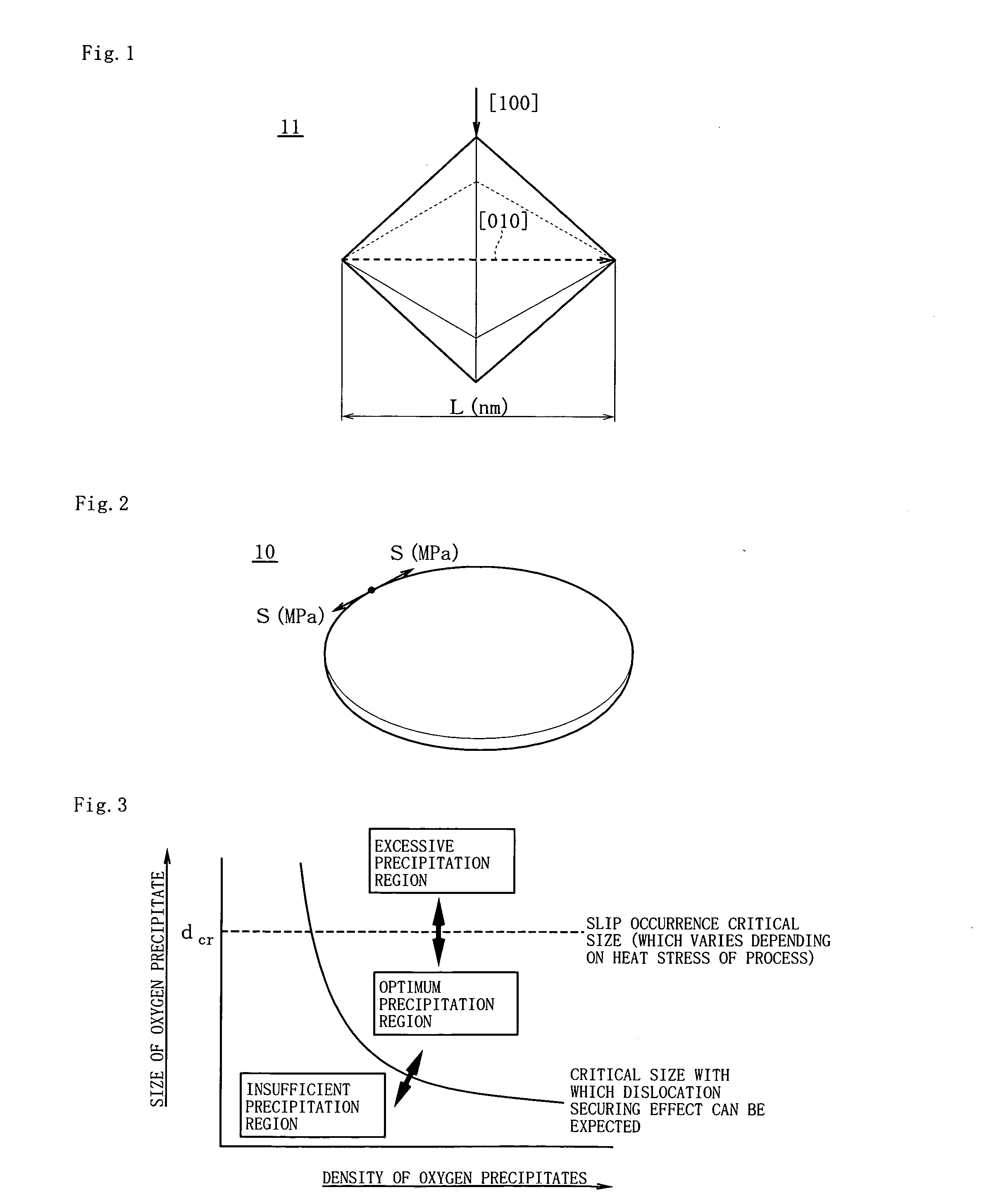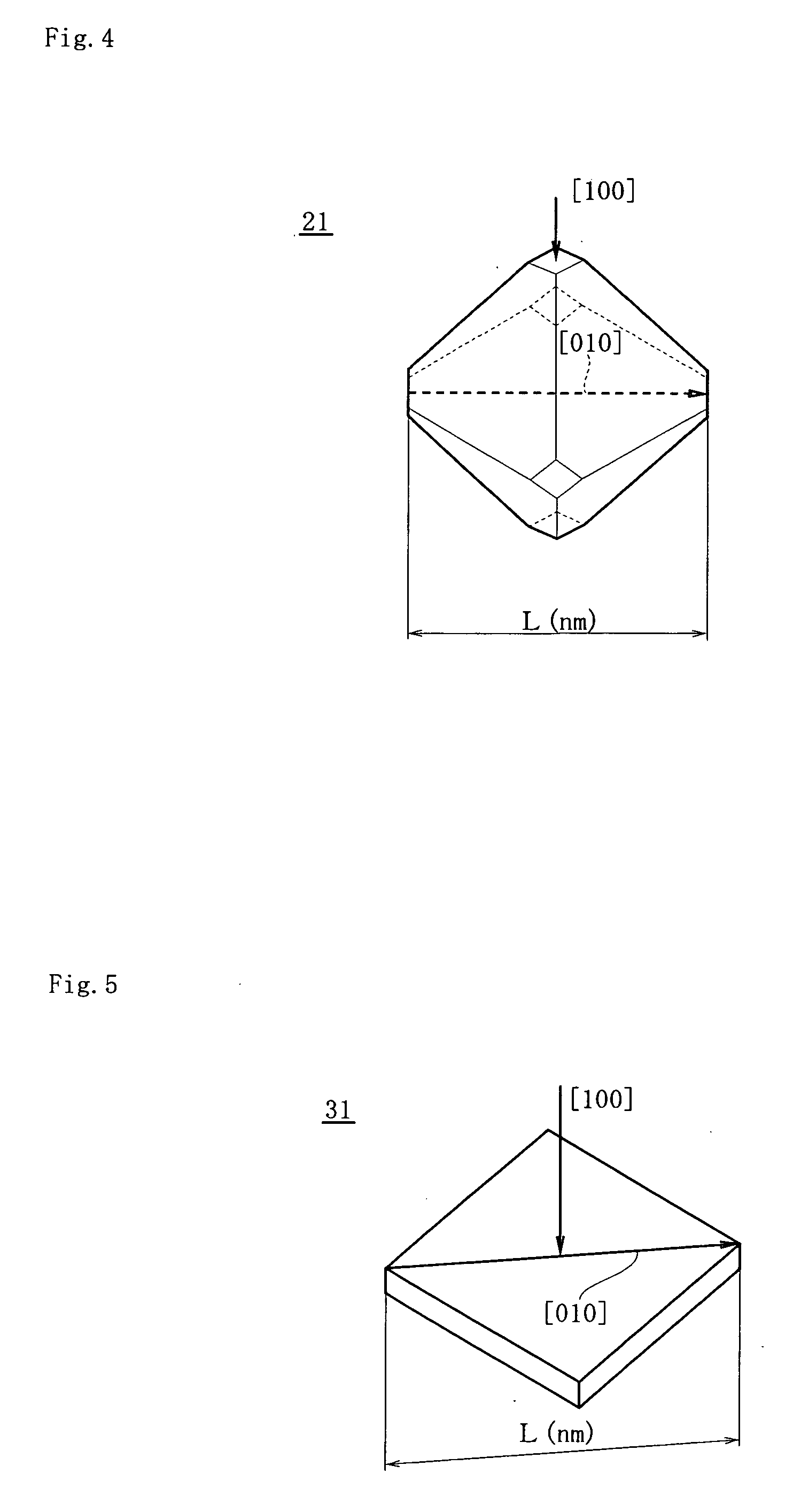Method for Manufacturing Silicon Wafer and Silicon Wafer Manufactured by this Method
a manufacturing method and technology for silicon wafers, applied in the direction of silicon compounds, semiconductor/solid-state device testing/measurement, instruments, etc., can solve the problems of easy deformation of wafers, and reduced device yield ratio, etc., to achieve high yield ratio, low cost, and short time
- Summary
- Abstract
- Description
- Claims
- Application Information
AI Technical Summary
Benefits of technology
Problems solved by technology
Method used
Image
Examples
first embodiment
[0033]As shown in FIGS. 1 and 2, a silicon wafer 10 is a silicon wafer obtained by slicing a silicon single-crystal rod grown based on the CZ method, to which a heat treatment is then applied to form oxygen precipitates 11 inside and of which at least a main surface is subjected to mirror polishing processing. This wafer 10 is then shipped to a semiconductor device manufacturer and subjected to a heat treatment in a device manufacturing process.
[0034]On the other hand, FIG. 3 is a schematic view showing a concept of a relationship between a density and a diagonal length (a size) of oxygen precipitates formed in the wafer after the heat treatment step of forming the oxygen precipitates and immediately before the heat treatment step of the device manufacturing process, where there are lower limit values of the diagonal length (the size) and the density of the oxygen precipitates within which a dislocation in the wafer can be secured even if a heat stress functions in the heat treatmen...
second embodiment
[0054]FIG. 4 shows a second embodiment according to the present invention.
[0055]In this example, a shape of an oxygen precipitate 21 formed in a silicon wafer is a 14-faceted shape. This 14-faceted oxygen precipitate 21 has a shape obtained by chamfering six corners of the regular octahedron oxygen precipitate in the first embodiment. The regular octahedron oxygen precipitate in the first embodiment and the 14-faceted oxygen precipitate 21 in this embodiment are generically called a polyhedral oxygen precipitate. Other structures are formed to be equal to those in the first embodiment. Moreover, in this example, a diagonal length (a size) of the oxygen precipitate 21 means a diagonal length extending in a crystal orientation direction [010] of the 14-faceted oxygen precipitate 21 when this oxygen precipitate 21 is seen from a crystal orientation direction [100] of a silicon wafer.
third embodiment
[0056]FIG. 5 shows a third embodiment according to the present invention.
[0057]In this embodiment, a shape of an oxygen precipitate 31 formed in a silicon wafer is a square tabular shape.
[0058]Additionally, assigning a size distribution function f(r,t) after an arbitrary heat treatment to Expression (5) mentioned above and the following Expression (7) can calculate a diagonal length L (nm) and a density (pieces / cm3) of an oxygen precipitate 11 (a square tabular oxygen precipitate).
[NumericalExpression4]L(nm)=107×[8β]1 / 3∫rf(r,t)r∫f(r,t)r=107×[8β]1 / 3∫rf(r,t)rD(7)
[0059]In Expression (7), β is an aspect ratio (a thickness / a diagonal length of the square tabular oxygen precipitate) of the oxygen precipitate (the square tabular oxygen precipitate) and it is a value of approximately 0.01. Other structures are formed to be equal to those in the first embodiment. Additionally, in this embodiment, the diagonal length (the size) of the oxygen precipitate 31 means a diagonal length extending in...
PUM
 Login to View More
Login to View More Abstract
Description
Claims
Application Information
 Login to View More
Login to View More - R&D
- Intellectual Property
- Life Sciences
- Materials
- Tech Scout
- Unparalleled Data Quality
- Higher Quality Content
- 60% Fewer Hallucinations
Browse by: Latest US Patents, China's latest patents, Technical Efficacy Thesaurus, Application Domain, Technology Topic, Popular Technical Reports.
© 2025 PatSnap. All rights reserved.Legal|Privacy policy|Modern Slavery Act Transparency Statement|Sitemap|About US| Contact US: help@patsnap.com



